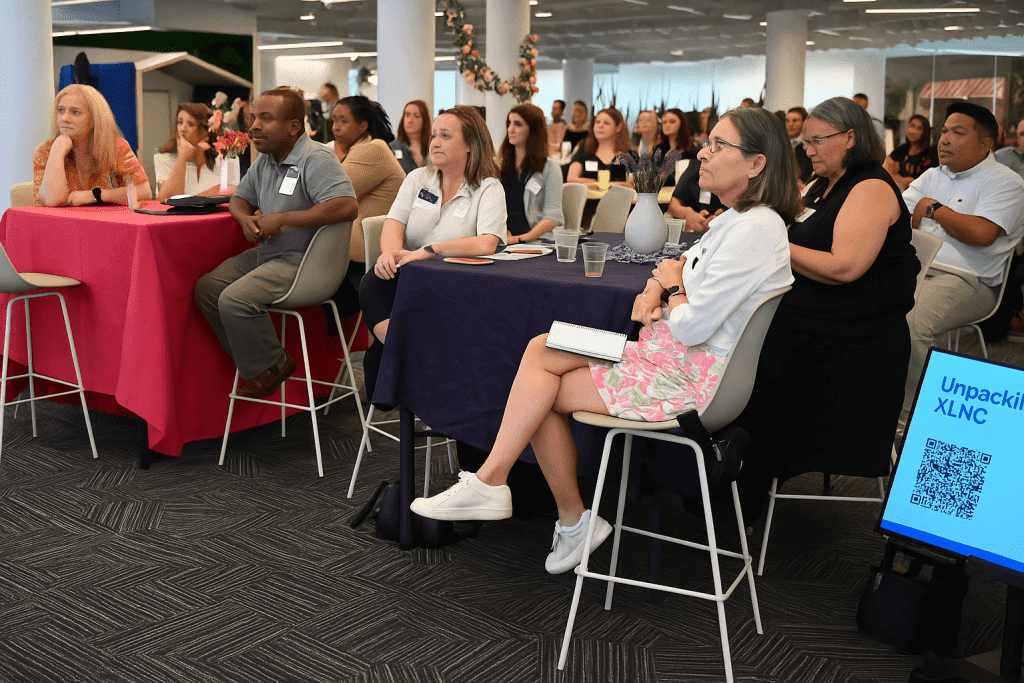
More than 130 event professionals gathered this week at Freeman’s Alexandria, Virginia office to explore the findings from the company’s latest trends report. Networking activities gave attendees a taste of what the report focuses on: “designing for serendipity.”
“While every other aspect of an event has clear direction, networking often falls through the cracks,” said Ken Holsinger, senior vice president of strategy at Freeman.
The data backs him up. According to Freeman research, just 4% of events have someone explicitly tasked with attendee connection.
“You’ve got someone in charge of exhibits, another person in charge of education. Who’s in charge of networking? For most companies, no one,” said Holsinger. “Honestly, I was a little surprised that number was as high as 4%.”
Connection Drives Retention
Neglecting networking is costly, especially when it’s the number-one reason people return.
“This is a serious oversight, considering 51% of attendees cite networking as the top reason they return to an event,” Holsinger said. “As attendee acquisition becomes more expensive, planners can’t afford to ignore what keeps people coming back.”

For first-time attendees, retention hovers around 30%. That means 70% of first-timers don’t return. But when they make meaningful connections, they’re more likely to come back.
“If you don’t increase retention rates, your events will shrink and in some cases, retire,” said Holsinger.
Too often, networking is relegated to receptions and lounges, treated as a passive outcome rather than a designed experience. But today’s attendees expect more.
Architecting serendipity means building spaces and moments where meaningful conversations can happen, not squeezing networking into the margins of a 7 a.m. to 7 p.m. agenda.
Gen Z Wants Real Connection, But Needs Help Finding It
Gen Z now makes up 21% of event audiences, nearly double the 12% from just a few years ago. This generation values in-person connection more than any other, even as they report the lowest confidence in their networking skills.
“If we are going to pay attention to the emerging generations coming to events, we’re going to have to wake up and program differently,” said Holsinger.
As the cost of holding events continues to rise, cutting activities that foster camaraderie is a mistake. “That’s the last thing you should be doing. You are making an investment to get someone to your conference, how can you make their time there more meaningful?” said Holsinger. “As younger attendees go to fewer gatherings, the gatherings where they connect with others are going to take precedence over ones that don’t.”
This paradox presents an opportunity: events that prioritize curated connection can win long-term loyalty from a rising demographic.
“We hear all these conversations about the loneliness epidemic. What better way to make connections than an in-person event that helps facilitate them. Plus, this generation trusts in-person more than any other source,” said Holsinger.
Better Networking = Better Business
The business case for investing in networking is clear: when attendees connect, retention improves, sponsors get more value, community stickiness increases, and revenue grows.
It’s time to move beyond the Net Promoter Score as the primary measure of event success, says Holsinger. Instead, organizers should track metrics such as the number and quality of attendee connections, attendee-to-exhibitor engagement, session relevance to networking goals, and connection-driven retention rates, he said.
Freeman surveyed 4,114 people for this report, including attendees, exhibitors, and event organizers.








